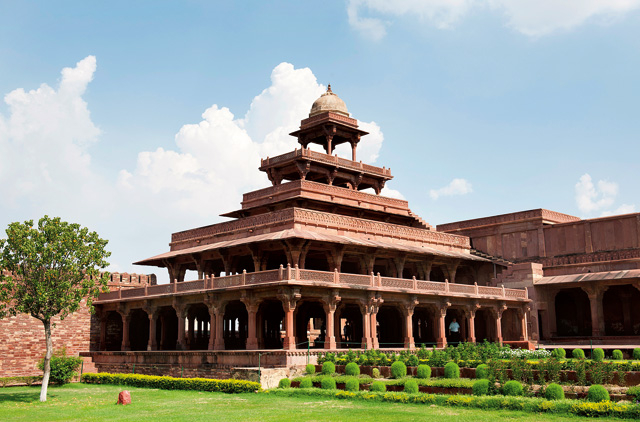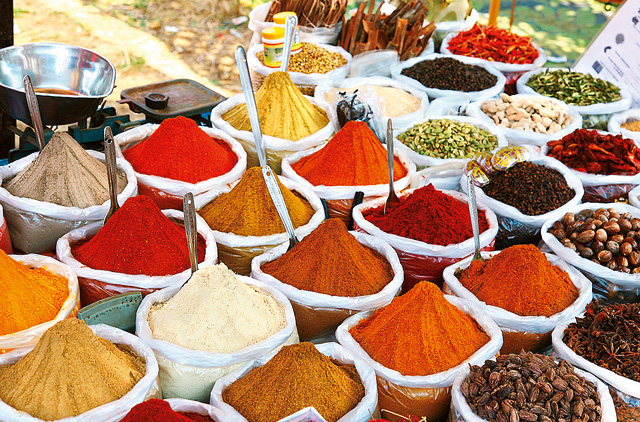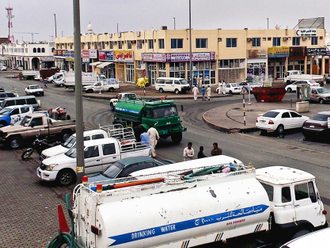
It's hot, it's dusty, it's a ‘proper' traveller's dream destination and it will assault your senses - in ways both good and bad - at every turn. It's also home to some of the most remarkable monuments you'll ever experience, steeped in a history awash with bloodshed, glamour, destruction and love. In fact, hire a licensed guide through your hotel or guesthouse to get a qualified account of the region, and you'll discover that the antics of generations of Mughals, Hindu warriors and Sultans puts most soap operas (and episodes of Keeping Up With The Kardashians!) to shame.
Situated in Uttar Pradesh, 200km south of New Delhi (a hair-raising four-hour car journey for those who like to live life on the edge, as Editor Gemma can attest), Agra, which once served as the capital when Sultan Sikandar Lodi shifted there from Delhi back in 1506, can trace its history back beyond 1000BC, and is today a super-bustling hub attracting over three million visitors each year.
Undoubtedly, most who arrive have come to gaze upon the paean to love that is the Taj Mahal, but stay a few more days to take in the majesty of the Red Fort, Akbar's Tomb, Fatehpur Sikri and Mankameshwar Temple, to name just a few historic sights, and you'll go home with a head full of wonder and a memory card full of photos.
Monumentous love
There's no ignoring the fact that Agra is home to one of the most famous structures in the world, the Taj Mahal, which has rightly been dubbed, "the jewel of Muslim art in India and one of the universally admired masterpieces of the world's heritage." Built from stones that shimmer in the pre-dawn and dusk light and glow a ghostly silver-grey at night, not to mention the semi-precious gems that are inlaid in every nook and corner, the white marble mausoleum houses the tombs of both Mumtaz Mahal, for whom it was built, and Mughal Emperor Shah Jahan - for whom its completion was a labour of love for his lost third wife, who died giving birth to their fourteenth child.
Westerners might be amused by the queues leading into the Taj, which are marked ‘women', ‘men' and ‘Indians' - as such compartmentalising might seem strange to the European eye, but are pretty innocuous by India's standards - foreigners pay more for entry to most other famous landmarks too. Be sure to check on the latest dos and don'ts before you visit (there are no clothing rules and the Taj is closed on Fridays, but often phones and video cameras are not allowed and you'll have to leave them behind at your own risk). Stunning from both up close and far away, a first glimpse of the Taj is one of those iconic moments when something so familiar from books, TV and the media suddenly becomes real. Underneath the Taj, which houses the two tombs, is sealed off to the public these days, with exact replicas available for public viewing beneath the famous onion dome. Marvel too at the structural engineering knowledge of 1632 when construction began, which saw the four surrounding Minarets built at a tilt of three degrees away from the Taj, so that an earthquake would send them careering away from the mausoleum.
History-steeped forts and ghost cities
Join the crowds at the walled city that is Agra Fort - which is first mentioned in texts dating back to 1080AD and still exists as a working fort for the Indian military - to once again immerse yourself in history surrounded by 70-foot-high walls, battlements, gates, palaces, Mosques and towering audience halls. Spend a few hours wandering around the Fort, before heading slightly out of the centre to Fatehpur Sikri, the imperial city of the Mughal dynasty from 1571-1584. Dubbed the ‘Ghost City of India', here you can enjoy the strong Hindu architectural styles of Gujarat and Rajasthan, built by the famed Emperor Akbar, who ascended the Mughal throne at the age of 13 in 1556, and whose tomb is another must on the tourist trail. Glory hunters will revel in the Diwan-I-Aam (Hall of Public Audience) surrounded by impressive colonnades, along with the Panch Mahal (five-tiered palace), with its top pavilion originally used by the women of the royal household and ladies of the harem.
Buy buy baby
As well as being offered on a minute-by-minute basis plenty of items you probably don't want by the persistent street vendors, there are many areas in which you'll want to spend time digging out interesting objects for your home, including marble work, leather goods, rugs, brassware and textiles. Don't go anywhere without your ‘haggling hat' on, and try Sadar Bazaar and Munro Road, which are all near the Taj complex, for some hassle-tastic shopping experiences. Marble aficionados with money should try the Subhash Emporium, where you can also watch the artisans carving, whilst you can pick up some authentic threads and textiles at Khadi Gramodyog on MG Road.
Trip Notes
Kinari Bazaar
Within walking distance of Agra Fort, head to the winding lanes of Kinari Bazaar, which fans out in all directions off Kinari Bazaar Road. Looking for fabrics, spices and jewellery? This is the place for you. Hugely crowded (watch your belongings), get lost in the maze for hours and emerge with a full-on global-traveller-chic wardrobe for less than a Dubai cocktail.
Mathura
A 90-minute drive from Agra finds you in the birthplace of the Hindu god, Krishna, which means Mathura is resplendent with temples and bathing ghats, and is awash with pilgrims. Head down to the Yamuna River at dusk to watch the floating candles being settled into the water for the aarti ceremony.
Garden Strolls
With impeccably kept gardens retaining a special place in Indian culture, take time to visit Swami Bagh, 10km north of the city; Ram Bugh, the first Mughal gardens built by Emperor Babar; or Mehtab Bagh botanical gardens, with their wonderful, relatively tourist-free views of the Taj Mahal.
Budget: Hotel Daawat Palace
This hotel is basic but clean, with all rooms air conditioned and featuring flatscreen TVs, a minibar and private shower. Positioned a two-minute walk from the Taj Mahal, there's a rooftop restaurant serving up Indian, Chinese and European cuisine, as well as 24-hour room service, with the front desk able to arrange all sightseeing trips.
hoteldaawatpalaceagra.com
Mid-range: Hotel Taj Resorts
The 28-room Hotel Taj Resorts is situated a mere 500 metres from the Taj Mahal site, and boasts a rooftop pool, massage service and sauna. Near to the airport and railway station, you'll find sightseeing help at the travel desk, as well as a business centre and car hire facilities. Guests can enjoy international fare at the hotel's Bon Appetit restaurant.
hoteltajresorts.com
Luxury: Oberoi Amarvilas
With every room offering up a view of the Taj Mahal in the distance, the Oberoi is a love letter to Moorish and Mughal architecture, boasting a stunning swimming pool and landscaped gardens. Enjoy fine dining at Esphahan, or all-day international cuisine in Bellevue, before booking in for a treatment at the spa - and be sure to include one of their many bathing rituals, which will see you soaking in milk and rose petals, whilst watching the sun set over the Taj.
oberoihotels.com
Filmed there
Mere Brother Ki Dulhan, Slumdog Millionaire, The Fall, Ekk Deewana Tha












